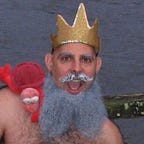What Was It Like When The Cosmic Web Took Shape?
The Universe began almost perfectly uniform, while today, it’s anything but. Here’s how we grew up.
One of the strangest facts about the Universe is how dramatically its changed over time. Today, we see a Universe filled with large galaxies containing hundreds of billions of stars, clumped and clustered together into a massive cosmic web. Closer back in time to the Big Bang, however, everything was extremely smooth and uniform, with very little clumping or clustering to speak of. Go back far enough, in fact, and you won’t find any galaxies or stars at all.
This makes sense from a qualitative point-of-view. The Universe was born with tiny imperfections, gravitation grows them while the Universe expands, and depending on how and where gravity wins, we get these enormous galaxies and galaxy clusters separated by regions containing nothing: cosmic voids. But structure didn’t form all at once, and the largest structures formed last. This is the cosmic reason why.
Imagine the Universe as it was in these early stages. It’s full of matter and radiation that distributed almost perfectly…
